Introduction
Before a Hearing of a NDIS appeal, a Member or a Registrar of the Administrative Review Tribunal (ART) will issue pre-Hearing programming directions requiring each party to prepare and to provide to each other and the Tribunal (by a given date) a submission outlining its case. This reflects the requirements in Part 7 of the Administrative Review Tribunal (Common Procedures) Practice Direction 2024 (Practice Direction).
The submission is called a ‘Statement of Facts, Issues and Contention’, or ‘SFIC’ or ‘SOFIC’ for short. Below is my quick guide to preparing a SFIC.
How to start your SFIC
Start your SFIC with a summary of:
First, the Applicant (e.g. who they are, their age and their disability or developmental delay); and
Second, a short but specific description of the outcome you want from the appeal. Here are some examples.
- The Applicant wants the NDIA to change her plan so that it includes sufficient capacity building for a 20 hour per week ABA therapy program plus weekly speech pathology for her over the next12 months; OR
- The Applicant’s parents wants the NDIA to increase their son’s (the participant’s) SIL support funding so that it covers the cost of 1-1 care for him in his home, with this comprising 8 hours of inactive overnight care, 8 hours of active day time care and 8 hours of inactive day time care) each day, 7 days of the week; OR
- The Applicant wants the NDIA to grant her access to the scheme on the basis that she meets the disability criteria.
The Facts
Part 7.2 of the Practice Direction explains what to include/not include in the ‘Facts’ section.
- Do include a chronological summary of your evidence (e.g. medical reports, carer statements, OT assessments).
- Do reference all your evidence (e.g. to their place in the T documents, or provide the date, author and author’s title of the medical/therapy report, the academic citation for published articles or the website link for evidence obtained from the internet.
- Do keep your language and tone polite, objective and neutral (non-emotive).
- Do not include personal opinions.
- Do not include excessive history of the shortcomings of the NDIA’s process in the plan and internal review stages. The Member’s role is to stand in the shoes of the internal reviewer, look at the matter afresh, and make a new decision. Thus, the history of NDIA’s process and communication errors, delays, etc, is not all that relevant at the Hearing.
The Issues
Part 7.4 of the Practice Direction sets out what to include in the ‘Issues’ section. This will usually reflect the type of matter it is (e.g. funding, access), the outcome you want from the appeal (as stated in your introductory summary), and the specific issues that remain unresolved after the dispute resolution process.
Here is an example.
The main issue in dispute is whether a 20 hour per week ABA therapy program is a ‘reasonable and necessary’ early intervention support for the Applicant over the next 12 months. The sub-issues are whether the program meets the ‘value for money’ and ‘effective and beneficial’ criteria in the reasonable and necessary support test.
Your Contentions
The ‘Contentions’ section is the juicy bit of the SFIC! As set out in Part 7.5 of the Practice Direction, in this part you can argue why the ‘correct and preferable’ decision of the Member is to the outcome you want. You can refer to the facts in dispute, and explain why your version of the facts should be accepted or preferred over the NDIA’s.
Here is an example.
The opinion of Dr P, the NDIA’s expert, was that there are risks of harm to a small child with autism having 20 hours of ABA therapy per week. He thought she should only have 12 hours per week.
Her treating paediatrician, Dr A, recommended that she continue with the 20 hour per week ABA therapy. Dr A has reviewed her every 6 months for the past 4 years and has directly observed, and reported on, the developmental gains she has made with 20 hours of ABA therapy over the past year, as compared to the lower intensity options she had trialled before ABA therapy. Dr A considered that if she stopped the program now, this would likely lead to regression and put her at risk of not being ready for school in 2026.
Dr A’s evidence is to be preferred over Dr P because Dr A has known and regularly interacted with the Applicant in person over a 4-year period. Dr A is independent of the NDIS. Contrast to Dr X, who has never met the Applicant, nor examined her, in person. Dr X saw her on a computer screen for a few seconds in a Zoom telehealth call with her mother, arranged by the NDIA’s lawyers. This is an unreliable way to ‘assess’ a small child with ASD3 who cannot communicate.
Some more tips
Here are some more tips for writing your SFIC.
- Use neutral language and a polite tone throughout.
- In the Header, put the ART case name and reference number.
- In the Footer, put page numbers.
- Use paragraph numbers throughout.
- Put longer references, such as academic article citations, or weblinks, in footnotes.
- When you have finished your SFIC, have someone else proofread it to identify any typographical and grammatical errors.
- Email the final SFIC to the Tribunal at reviews@art.gov.au and to the NDIA’s lawyer by the given due date/time (COB if a particular time is not given).
Need more time to write your SFIC?
If you need more time, contact the Tribunal at reviews@art.gov.au (copying in the NDIA’s lawyer) before the given due date, and say why you need more time to provide the SFIC, and specify how much time. The Tribunal will usually ask the NDIA’s lawyer to confirm whether they agree to your requested extension or not. If the Tribunal grants your request, it will email updated directions to the parties, with the new timeframes.
Conclusion
Writing a SFIC is a big job, and can be daunting. If you need more personalised support and advice, then contact us to find out how we can support you to prepare your SFIC and ART Hearing.

